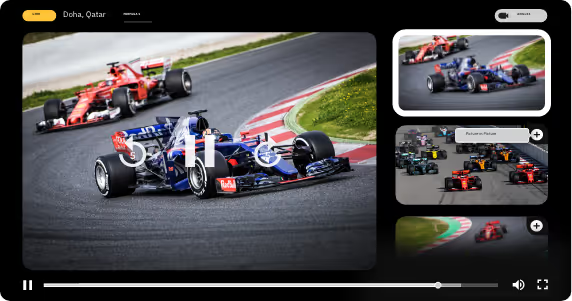We live in a world of endless content. We are able to watch whatever we want, whenever we want it…or at least that’s the promise we’re always told, but never see delivered.
There is one type of content that we hear about all the time although it doesn’t really exist: live streaming video content. Change my mind, but it’s not really live when it has a 30 second to a 1 minute delay.
The stats speak for themselves.
People over 65 years of age slightly prefer live broadcasting, whether it is because they’re reluctant to the changing technology or because this is the way they’ve always watched live events.

But this graph shows a problem for all live broadcasters: the most powerful consumer generations are reducing their viewership. And they’re not looking back: Gen Ys and Gen Zs have halved their live content consumption in just two years.
They’d much rather spend time on social media to instanlty see what happened in an event instead of watching it live. Why? Is it because of the so-called engagement that originates from social media? Or because the terrible live broadcast experience is pushing users towards it?
This is a question people have been trying to answer for a while. The broadcast industry is hanging by a thread, and yet it's been cornered on using technology that is not up to the task of delivering a truly live experience.
Let’s begin with a question: Why do you go to a concert? Everyone has a different answer, but I’ll bet that one of the most common ones is because there’s thousands of people watching the same thing. It’s a different experience than watching it at home, because it is shared.
You can hear the crowd. You can feel the beats pumping on the ground and up through your feet. You join everyone else in the clapping and wooing. So, how do you replicate this at home so you feel you’re there?
Many say you simply cannot replicate it, but I’m sure that people say this because they haven’t experienced a truly live broadcast. As I said before, a delayed live stream isn’t really live.
How come technology has come so far, but yet it has sent live broadcasting down a cliff?
I am certain that live broadcasting can be improved exactly by the same thing that threatens it: immediacy. It is what drives young Gen Zers to TikTok, Instagram, or any other social media platform: the chance to connect, interact and choose what they want to see at the exact same time that it is happening.
As smartphone or tablet technologies have kept improving, we’ve all migrated to an individually shared experience. Everyone is now looking at their own smartphone screen, which is designed to be incredibly personalized, and yet we are able to share the same excitement when our team scores a point or our favorite artist gives a fantastic performance.
And as this may not seem as insightful or innovative as one may think, it is a game changer for the world of entertainment, arts, and culture.
As long as technology allows precision and time, anything happening elsewhere can be shared by people wherever they carry their smart devices. This way, live broadcast can be updated and better suited to what consumers are expecting today.
They want an interactive capability. As they watch an event on one screen, with a single swipe they’re also liking a post on a celebrity’s Instagram, sharing their thoughts on the last play on Twitter, or uploading their reaction on TikTok with its accompanying little dance.
We might think this is an unremarkable insight, but having so many things competing for people’s attention opens up opportunities for better ways to consume content. Like hyper personalization, for example.
There is a specific audience that we should focus on when it comes to this particular content strategy:
Generation Z, those people born in 1997 onwards. Basically they were born holding a smartphone and all their experiences have been shaped around these devices. In return, it is Gen Z who now dictate what type of content is consumed right now, and how.
True OTT technology, one without latency, can allow each of these experiences to be lived through different angles and seen through different perspectives. Imagine a theater’s backstage area with little cameras attached to performers. There’d be an audience for that. Or maybe a soccer team’s locker room. It is a world of opportunities that give room to become creative.
This is the game-changing quality that live streaming can bring to the table: to take us as far as our creativity can go.
Suggested reading

Mobii Systems and UAR Rugby Join Forces to Revolutionize Rugby with Advanced Video and Data Technologies in Three-Year Partnership

Mobii Systems Completes AWS Foundational Technical Review Milestone for Its Ultra Low-Latency Streaming Solutions

Mobii Leads the Way in Zero Latency Streaming: Join the Streaming Media Tech Talk

Mobii ultra low-latency streaming services on Microsoft Azure now available in the Azure Marketplace
Subscribe for original content and announcements.







.png)

.avif)


